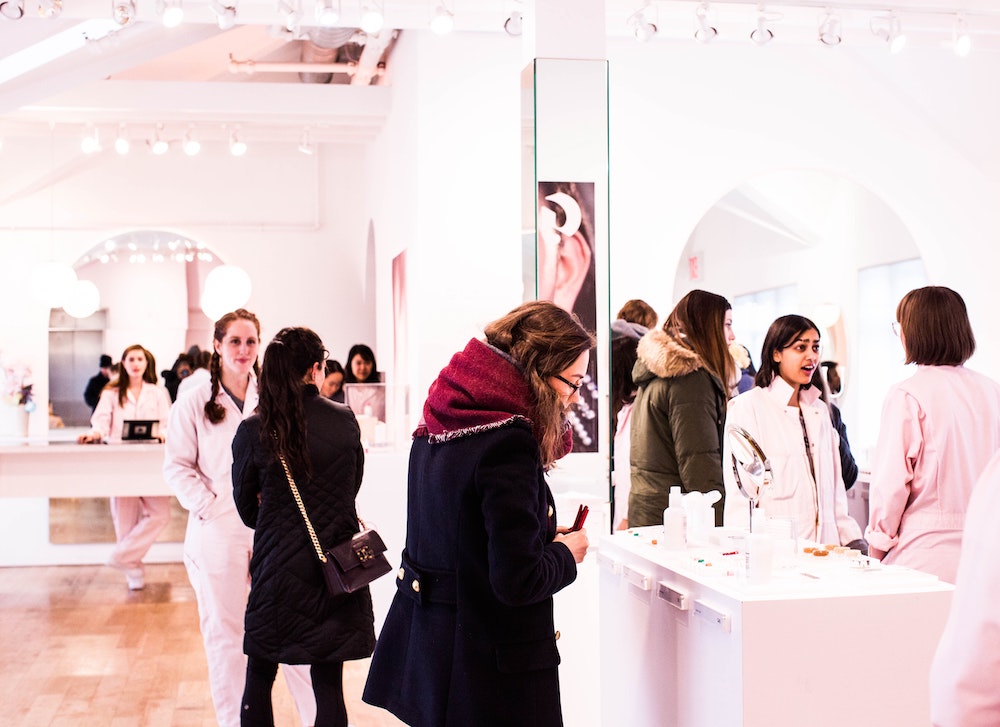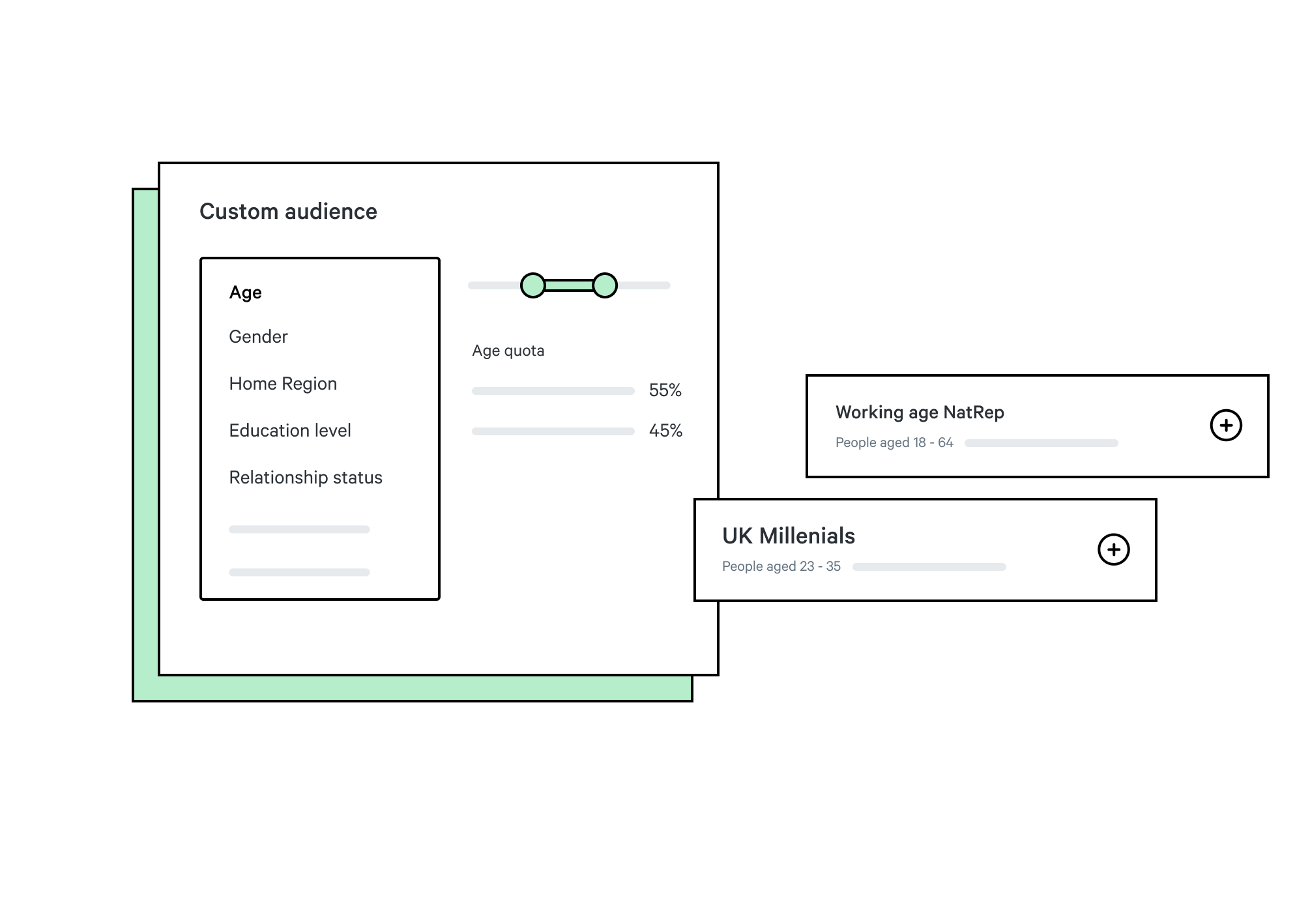Customer profile fashion guide and tips

Check out this complete customer profile fashion guide to draft your own customer profiles – always have up-to-date and accurate customer information.
You have a fantastic idea for a new collection or even an entire brand in mind. Your hands are itching to start sketching, to find the perfect materials, the perfect models to showcase your latest line—but let us stop you right there.
If your goal is to sell these astonishing designs and profit from it, you know that it’s not all about looks. You’ll need paying customers.
That means you need to find out who and where they are. Creating a fashion customer profile (a detailed imagining of your ideal customer) is a vital stepping stone to convincing real people to buy your product. In this article, we’ll help you do just that. Here’s what to consider to find the ideal customer for your fashion brand:
- Who is this person? What is their age, location, job, etc?
- Why are they interested in your product in the first place?
- Where do they spend their time online? What social media do they enjoy most?
You can find much of this data by using a consumer profiling template as part of your next survey.
The importance of a customer profile for fashion brands
Why is it important to conduct market research for fashion?
We all know that fashion is a matter of taste, and those tastes are ever-changing. Influencers, social media, big fashion brands and the passing trends mean that almost no consumer has the same style for longer than a few years, and every fashion business is trying to keep up.
So, instead of reacting to trends and following the flux of customers, it’s key to get ahead by getting inside the head of your customers. You need to get to know them—the real them.
When you have a clearly defined customer profile, you can create products they actually love, and market them in a way that convinces them to buy.
What happens if you don’t create a customer profile first?
If you’re moving forward without a customer profile for your target customers, your fate will be in the hands of the fashion gods. And they tend to be brutal.
By creating products with a “one-size-fits-all” mindset, not having an ideal customer in mind, you risk creating products that nobody wants. Or you have misconceptions about whom to sell to, where and how, and waste time and money trying to redirect the attention.
Customer profiles make selling easier
Want to boost sales? Simple! Get to know who you’re selling to. A fashion customer profile includes information that makes it easier to make your customers happy. It will provide you information used to find the right price, select the right channels and time your tactics perfectly.

Customer profiles can lower acquisition costs
If you’re marketing to every woman in their 20s in the UK, you’re going to lose a lot of money and control over your marketing campaigns. Such broad target groups will require a huge budget to reach everyone, and chances are that you won’t hit the sweet spot and be convinced to buy.
With a clear picture of a client profile in mind, you can create extremely targeted campaigns that really speak to your target market. Sure, that’s an investment to make upfront, but it will definitely lower your customer acquisition cost (CAC).
Customer profiles help you build connections to your target market
The trick is not to sell to someone just once, but to keep them coming back for more. For that to happen, you’ll need to know what makes them tick, what they are looking for, and how they behave. All of that comes back in a target customer profile.
Using a strong customer profile in your marketing tactics will enable you to market to people who are likely to stay happy customers for over a longer time. They’ll be more loyal, spend more, and recommend you to their fashionista friends.

How a customer profile is different from a buyer persona
So, how do you create an ideal customer profile? There’s an important distinction to make here: don’t confuse customer profiles with buyer personas.
Buyer personas are sketches of who your ideal customer could be. Customer personas are often made up of similar aspects as customer profiles, but customer profiles are actually made based on information from real customers.
Buyer personas are imaginary, customer profiles are data. This data will tell you how many of them there are, how much they spend, what has worked in the past and what hasn’t.
That does not mean however that buyer personas are useless—they are just used in a different way.
Buyer personas, when verified, can be great foundations for your marketing team to map out and create content, for instance.
Our tip? Create a clear customer profile, and then create buyer personas that describe the people within this customer profile, to create laser-targeted content that really resonates and compels them to become loyal customers.
Consumer profiling segmentation
What do you need to know about your customer to create an accurate, actionable profile?
There are four customer segments you can dive into to get a clear picture of who your target customer is. It’s important to combine the information from these different segments, to be able to debunk or defend any assumptions you have about your company’s customers.
Let’s dive right in.
Demographic
Let’s start with the basics: for the demographic part, you’ll need information such as gender, age, education, income for example.
Geographic
For some fashion brands, it’s all about location, location, location. If you’re selling season-specific items, like sunglasses or ski pants, you’ll want to look into geographical aspects. How many of your ideal customers are living in certain cities or countries? This will mostly help you determine if a target market is big enough, and it’ll help you figure out logistics.
Behavioural
This is where it gets really interesting. For this segment, you dive into the relevant behaviours of your target market.
For instance, look at what type of shoppers they are. Are they impulsive shoppers, brand loyalists or bargain hunters? Where do they shop and how much do they spend? Who influences their shopping behaviour?
But it goes beyond their spending habits. In this segment, you’ll also look at the social media channels they use and other aspects of their life that could affect their fashion spending.
Psychographic
The psychographic information is the icing on the cake of your customer profile. Here’s where you find out what values your customers have—so you can try to find the connection—their interests, pains, and goals. Ultimately, this is what will help you take your marketing to the next level.

How to build a customer profile for fashion
Ready to get to know your customers? Let’s look at some ways to build a customer profile for brands in the fashion industry.
Step 1: Know why you’re creating customer profiles
In a previous article, we looked into some steps to turn consumer data into useful profiles. And the first step remains: ask yourself why you’re doing this.
What outcomes are you looking for? If you want to ask more targeted questions, make sure you know what type of information you’re after and why. There are various use cases for customer profiles: you’re designing a new collection, want to improve your messaging, or set up a whole new strategy.
Determining the end goal first will help you structure your research, and your survey. Ask why you’re conducting the research in order to assign appropriate budget and scope to the task and ensure you’re not spending time and effort on research that isn’t particularly relevant for the business.
Step 2: Look at the data you already have
Your CRM, sales department and customer service agents will already have assumptions or actual data about your customers. You don’t need to reinvent the wheel, so tap into these resources first. Every question you’ll be asking your customers needs to count, so if you already have some information available, you can skip those questions and dive right into the deeper conversations.
Step 3. Connect with your customers in a survey
For customer profiling, you’ll need customer data. A lot of it. A target customer profile will be made up of a mix of customers. And the more, the merrier.
For this, an online survey platform is best. It’s easy for them to fill in (particularly using Attest’s customer profile template), and easy for you to send out and analyse—if you use the right tool, such as a market analysis template or consumer insights software.
Our advanced audience access and filters make this all possible. Lost for words and don’t know what to ask? Our team of in-house experts has created consumer profiling survey templates and real-life consumer profiling survey examples that you can completely tailor to meet your needs.
Still not sure? Here are some real examples of what happens when brands don’t run consumer profiling, starring Facebook, Pepsi and Dove.
Step 4: Fill in your customer profiles and get feedback
Time to connect the dots! Our platform will present all the findings in a logical way that you can easily share with your team.
Once everything is in one place and you start filling in the customer profile, make sure to check with your team and different departments what they think of the profile. Is there anything they didn’t expect? Does the customer profile fit the picture they had of your customers, or does this call for a significant change in strategy? That brings us to the next point: making your customer profile actionable.
Using your target customer profile example for your marketing strategy
Now that you have built a consumer profile, what can you do with it to vamp up your marketing strategy? Here are our top tips:
Make it all about the customer
First of all, it’s helpful to share this profile with everyone in your business. From designers to marketers: this information might spark some inspiration that will turn your next collection or campaign into a huge success.
Grow with your customers
Seasons change, and so do your customers. To make sure your customer profile is as accurate as can be, follow up after a trial period to see if there are any changes in your customer profiling, or if you got something wrong.
Get your marketing tactics from the profile, not the other way around
Stuck with creating a marketing strategy that’s as effective as engaging? Instead of brainstorming ideas that you can apply to your customers, flip your way of thinking around. Take a good hard look at the customer profile, and find touchpoints, gaps and little pieces of information that could guide the way.
Build fashion customer profiles with Attest
A strong survey tool never goes out of style. Here at Attest, we’re all about helping you gather real, useful insights that will grow your business and the love your customers have for your brand.
Sounds good? We think so too. Check out our consumer profiling solutions and get started within minutes.
Tell us what you think of this article by leaving a comment on LinkedIn.
Or share it on:


